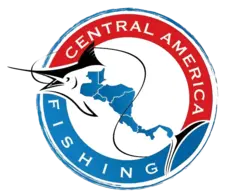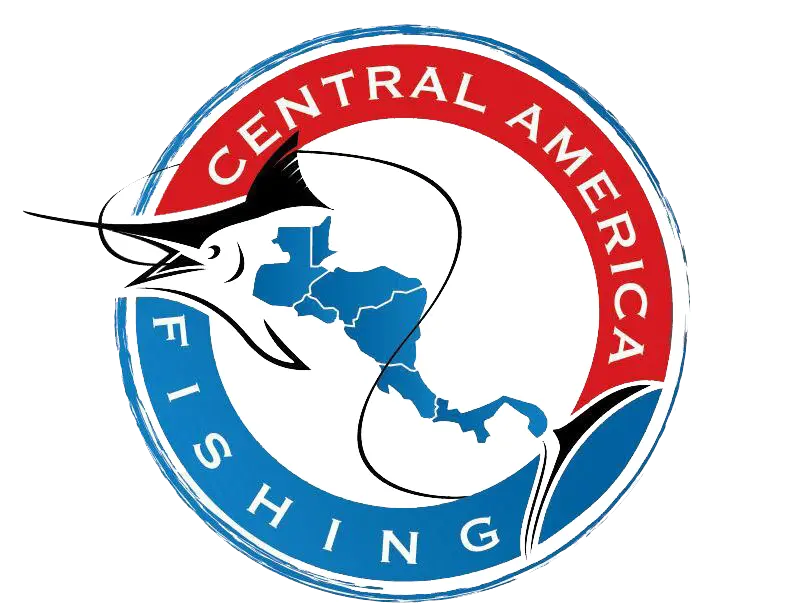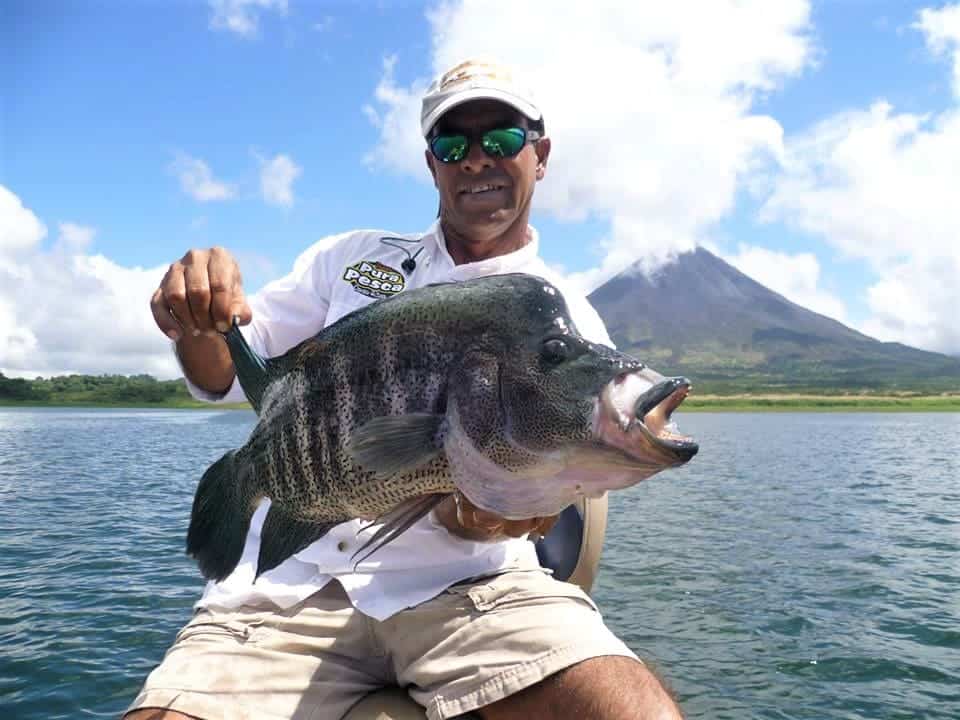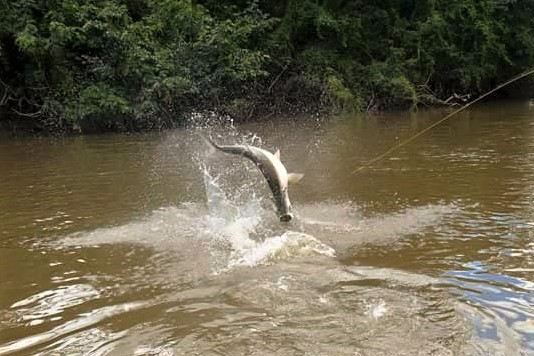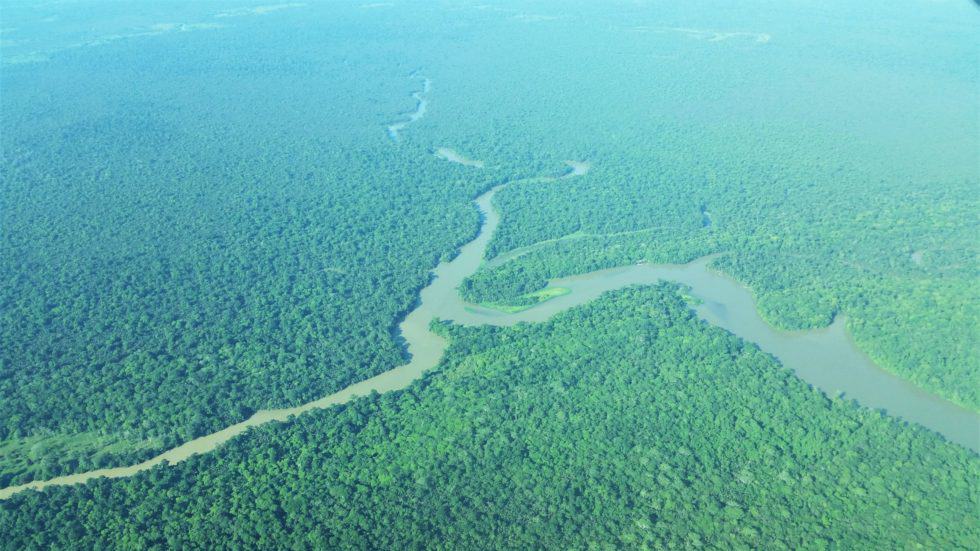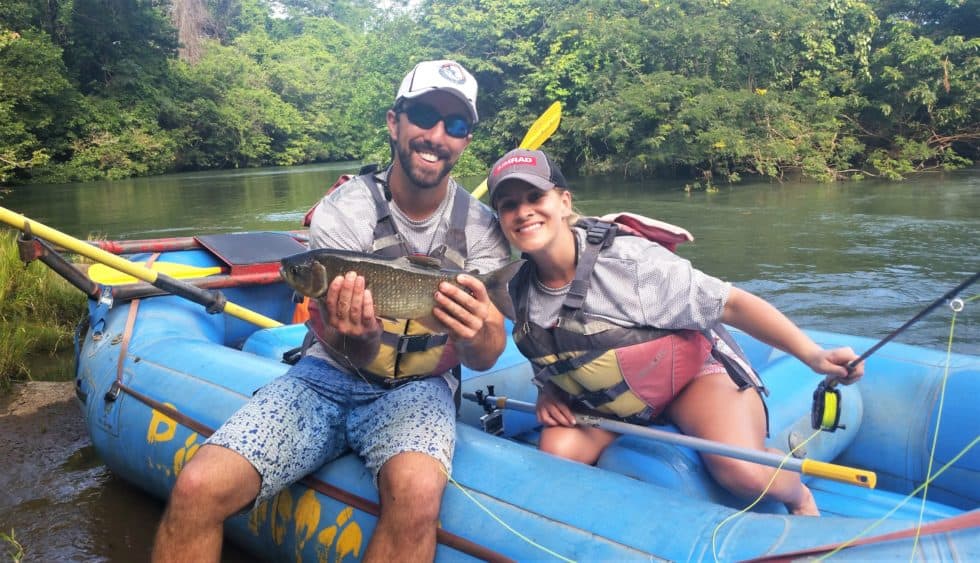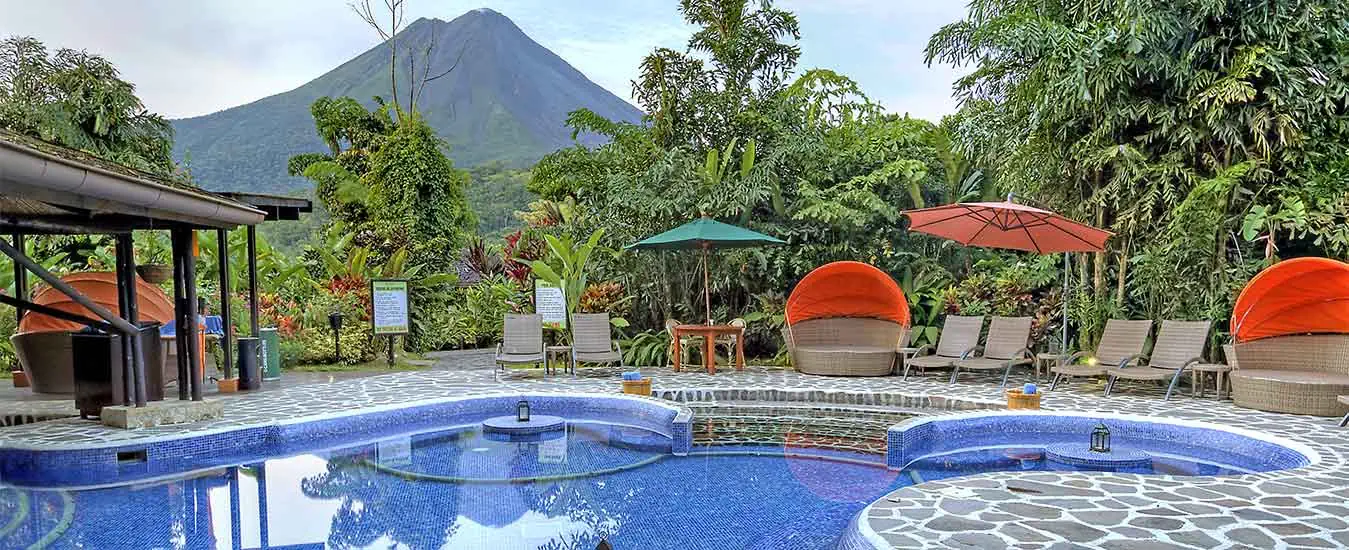Costa Rica Freshwater Fishing
Packages
Fishing Info
Seasons
Available Species
Accomodations
FAQ’s
Costa Rica’s amazing biodiversity isn’t limited to the rainforests and wildlife, we get to enjoy it throughout the sport fishing industry as well. Freshwater fishing in Costa Rica offers a variety of venues like remote lagoons, floating down jungle rivers, or fishing the largest lake in the country – Lake Arenal. Often overshadowed by the incredible saltwater fishing, you can fish for exotic local species like rainbow bass and machaca or do battle with familiar foes like tarpon and snook. Once you inquire with us we’ll work with you personally to customize your package to include the best freshwater fishing in Costa Rica. Trust our decades of local expertise and see why nearly 40% of our anglers are repeat & referral guests!
The Best of Costa Rica
Arenal & Los Sueños
4-in-1 Fly Fishing Tripl
Costa Rica Bassmaster
Fly Fishing In The Jungle
Fly Fishing Quepos
Where is the Best Freshwater Fishing in Costa Rica?
From the popular Lake Arenal to the remote Caño Negro wetlands to the various jungle rivers on each coast, Costa Rica offers fantastic freshwater fishing venues all over the country. Whether you are in search of exotic local species to add to your catch-list like the rainbow bass or simply seeking new destinations to battle old foes like tarpon and snook, Costa Rica offers it all. The freshwater fishery in Costa Rica is so diverse we even have rainbow trout in our colder mountain streams! Below is a map to show you where the best freshwater fishing in Costa Rica takes place, but leave it to us to coordinate all the logistics and set you up with each area’s best local fishing guide and a quality place to stay. Keep in mind that it is very easy to combine both freshwater fishing and saltwater fishing trips in the same package, your fishing vacation does not need to exclusively be one or the other.
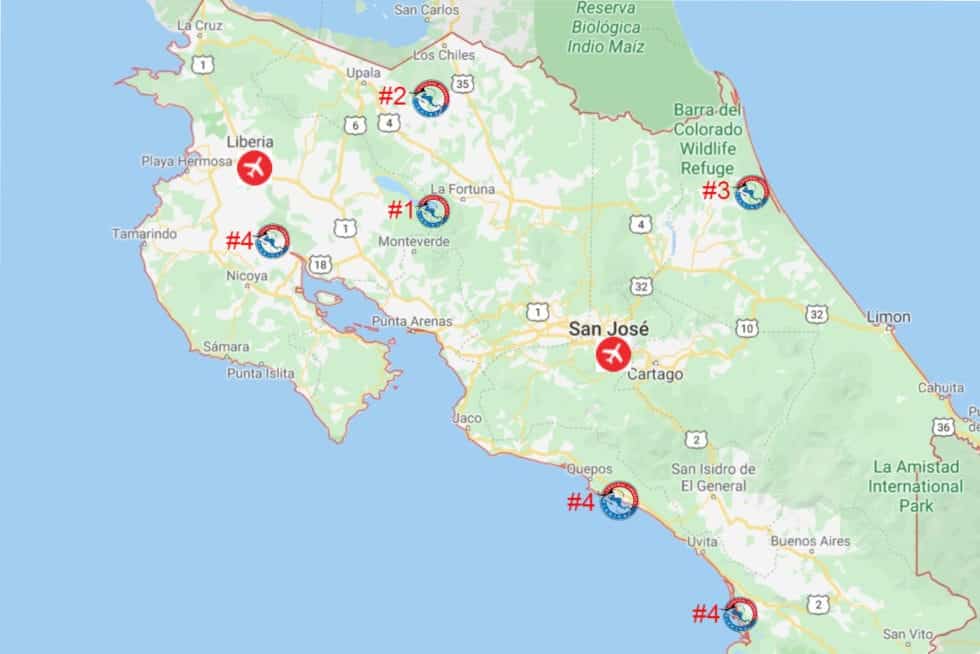
1) Lake Arenal Fishing
The most popular spot to enjoy freshwater fishing in Costa Rica is also the biggest, the 33 sq mile Lake Arenal. This massive, man-made lake was formed in 1979 to create cheap, clean hydroelectric power for the region and still serves it’s purpose today. When the damn was complete the surface area of the lake tripled and now it can be up to 200 ft deep in spots. This massive event turned hilltops into islands and converted grassy hillsides and the local rainforest into the perfect habitat for the local fish populations that thrive there today. Today the Arenal region is one of Costa Rica’s most popular tourist destinations due to the combination of thermal hot springs, adventure tours like rafting and zip-lines, eco tours like the hanging bridges and waterfalls, and luxury hotels that are enjoyed here. In addition to fishing on Lake Arenal, other water sports include kayaking, stand-up paddle boarding, and even kite surfing and wind surfing on the far west side of the lake can be enjoyed.
The most popular species to target when fishing on Lake Arenal is undoubtedly the rainbow bass. Known locally as “guapote”, which means “handsome one”, this is the prized local freshwater game fish in Costa Rica not only due to it’s brilliant colorings but also it’s hard-fighting ability. Rainbow bass are aggressive feeders that like to ambush their prey from heavy cover like tall grass or sunken trees. In the early mornings they can be found in shallower water patrolling ledges as they hunt sardines, but once the sun starts to heat things up they typically retreat to the cooler, darker waters. Most rainbow bass caught on Lake Arenal are in the 3-8 lb range, but fish over 10 lbs are caught every year. The older and bigger they get the more beautiful they become with more pronounced shades of blue and purple. For better or worse, they also have delicious white meat but since they are under a lot of pressure locally we encourage the catch-and-release of all rainbow bass. Rainbow bass are most often caught on small poppers, swim baits, and spinner baits in the early morning hours when they are hunting in shallower water. Once the sun is overhead they retreat to deeper water and can be targeted by retrieving or even trolling deep diving lures (15ft-20ft). They are such hard fighters and live in areas with a lot of cover many of our local guides will fish with 30 lb braid!
In addition to rainbow bass, Lake Arenal is also home to jaguar bass. This is a close relative of the guapote but does not grow as big nor display so many colors. Typically you can catch higher numbers of jaguar bass than rainbow bass, but most caught throughout Costa Rica are in the 1-3 lb range. They are found in the same areas and behave the same way as rainbow bass so many of the same techniques an lures apply.
The other main catch on Lake Arenal is the feisty machaca. Nicknamed ‘mini-tarpon’ for their silver scales and great leaping ability, these are a favorite among freshwater anglers because they almost always strike at the surface and then put on a great show once hooked. Machaca love to hit small poppers, but they can also be tricked with small baitfish lures as well. Machaca are found throughout Costa Rica’s waterways, but the biggest machaca are found on Lake Arenal.
Location: 2.5 hrs north of SJO Airport / 4 hrs east of LIR Airport
Available Species: Rainbow bass, jaguar bass, machaca, and tilapia.
2) Caño Negro Fishing
The Caño Negro Wildlife Refuge is one of Costa Rica’s most exotic and remote destinations. It doesn’t receive anywhere near the foot traffic that it deserves from tourists, but it is a known paradise for wildlife lovers and birders while freshwater anglers consider it to be one of Costa Rica’s best kept secrets. Covering over 24,000 acres, the wildlife refuge was established in 1984 and and named a RAMSAR Wetland in 1991 due to the hundreds of species of both local and migratory birds found here, mammals big and small from monkeys to jaguars, reptiles like caiman and crocodiles, and of course several species of fish. Some even refer to it as “the Everglades of Costa Rica”. Fed by the Rio Frio, the main lagoon at Caño Negro spans over 2,000 acres when it is full of water in our green season. During the dry season the lagoon retreats to become a series of channels and shallow lagoons and can be impossible to reach via boat.
Perhaps the most alluring aspect of fishing in Caño Negro is the opportunity to catch a tarpon in a lagoon located over 100 miles from the Caribbean. Caño Negro is a series of rivers and wetlands that branches off of the mighty Rio San Juan, which forms the physical border between Costa Rica and Nicaragua. It has long been believed that tarpon use this area as a nursery until they are big enough to head out into the main river and eventually out to the Caribbean. Unlike the tarpon caught on Costa Rica’s Caribbean Coast which average 80-100 lbs, many of the tarpon caught here are smaller juvenile tarpon in the 20-60 lb range. Don’t be mistaken however, there are some very large adult tarpon in here too, the biggest recorded was over 200 lbs! Also unlike the silver kings of the Caribbean Coast, the tarpon in Caño Negro have more of a copper or bronze hue to them due to tannic water and their diets. While catching a tarpon anywhere in the world is thrilling, jumping a tarpon in the middle of the jungle and fighting it in close quarters is a whole new experience.
As if catching one prehistoric beast in the middle of the jungle wasn’t enough, Caño Negro fishing actually offers another: the tropical gar. A close relative to the alligator gar of the southern United States, tropical gar share a similar resemblance but are much are much smaller as the average fish is about 2-3 ft long and 4-8 lbs. Their design is so perfect it has hardly changed in the past 75 million years: short snouts with nostrils at the end, a modified swim bladder that allows them to breath air, ganoin-covered scales that act like an armor plating, and of course a mouth full of razor sharp teeth. They mainly eat cichlids and other fish, so they can be caught on swim bait or better yet live bait – but either way a wire leader is recommended! Locally known as “gaspar”, they are protected now due to over-fishing and habitat loss. Caño Negro actually prohibits fishing from April through June every year during their spawning season.
Like tarpon, snook make the same journey for the same reasons so two of the Caribbean’s best game fish can be enjoyed in this freshwater paradise. The local exotic freshwater species like rainbow bass, jaguar bass, and machaca are all easily fished for here as well.
Location: 3.5 hrs north of SJO Airport.
Available Species: Rainbow bass, jaguar bass, machaca, tarpon, snook, tropical gar
3) Fishing the Caribbean Coast Jungle Rivers
While the tarpon and snook fishing along Costa Rica’s Caribbean Coast gets all the attention, there is some pretty fantastic freshwater fishing available there too. Most anglers visit this side of Costa Rica to do battle with big tarpon in the open ocean, but when the seas are rough, when you are tired of fighting 100 lb silver kings all day long and need a day off, or if you simply want a change of scenery fishing the freshwater canals and lagoons is rewarding and stunningly beautiful. The entire northeast corner of Costa Rica is dedicated to the Tortuguero Conservation Area, which is comprised of the Barra de Colorado National Wildlife Refuge (200,600 acres) and Tortuguero National Park (190,100 acres), so this is home to some of the best wildlife viewing in the entire country. Nicknamed “the Venice of Costa Rica“, there are no roads here so the freshwater rivers and channels are home to an incredible amount of wildlife including crocodiles, manatee, tropical gar, several species of snook, and of course tarpon.
Depending on which river you fish, you can float with the current and cast flies or small swim baits towards the banks in search of the feisty machaca. A favorite among us locals, machaca have earned the nickname “mini tarpon” due to their similar silver colored scales and incredible jumping ability. The imposing set of teeth machaca posses is to smash seed pods and fruits that drop into the water from above, so they almost always hit lures on the surface making them a perfect light tackle species. Most machaca are in the 2-5 lb range and are a catch and release species.
In the quieter, slow moving lagoons we’ll find other light tackle species like rainbow bass, jaguar bass, and mojarra. The thick rainforest and mangroves provides absolutely perfect habitat for these fish to both ambush prey and avoid becoming a quick lunch for one of the bigger predators that patrol these waters. Mojarra are like a sturdier, more muscular version of a bluegill and can be taken on small surface poppers and bugs. In these quiet waters we may also spot a tropical gar floating like a log or coming to the surface for a gulp of air, but catching them requires patience and a lot of searching.
Last but not least, the biggest predators of all also thrive in these freshwater rivers. Tarpon and snook are well known to frequent both brackish and fresh water, so they’ll pass in and out of the river mouths as they please in search of food, to avoid predators themselves, and to lay their eggs. As fun as catching a snook or a tarpon is, battling them in the confines of a river surrounded by thick rainforest is an experience most anglers won’t soon forget.
Location: Tortuguero, Parismina, Rio Colorado
Available Species: Rainbow bass, machaca, mojarra, tarpon, snook, tropical gar, snapper
4) Fishing the Pacific Coast Jungle Rivers & Mangroves
Costa Rica’s Pacific Coast is famous for it’s incredible offshore and inshore fishing, but the various rivers and mangrove systems offer excellent freshwater fishing as well. Our most popular trip is a float trip a handful of select rivers that are full of machaca. You’ll cover a few miles over the course of a few hours, so it’s not uncommon to make hundreds of casts on these trips. Many of these same rivers are used for rafting or wildlife viewing, so when you do a freshwater float trip it’s like a two-in-one tour as you get to enjoy freshwater fishing as well as wildlife viewing in the middle fo the rainforest. The vast majority of your catch on these trips will be machaca, but we’ll also catch snook, grunts, and the occasional snapper in the rivers too.
Closer to the river mouths on the Pacific Ocean there are a few places to enjoy mangrove fishing as well. Thick and humid, yet full of marine life, birds, and monkeys, freshwater fishing Costa Rica’s mangroves can offer good sized snook, snapper, and corvina.
Location: Quepos, Sierpe, Tempisque, Guanacaste.
Available Species: Machaca, grunts, rainbow bass, snook, mangrove snapper, corvina
When is the Best Time for Freshwater Fishing in Costa Rica?
Costa Rica in general has two weather seasons; the dry season (summer) and the green season (rainy season). With two different coastlines and towering mountain ranges in between, these seasons differ from the Pacific to the Caribbean. The freshwater fish of course aren’t migratory so we can and do catch them twelve months a year, but depending on where you are doing your freshwater fishing in Costa Rica some months are more productive than others.
Lake Arenal is Costa Rica’s most popular freshwater fishing destination as well as its biggest. At 33 sq miles, there is certainly no shortage of habitat for fish to hide so the fishing is best here when water levels are lowest and the fish are more concentrated. Once water levels rise with the rains, they are able to work their way into the grass and fallen trees and are much harder to catch. The fishing is productive in the early morning almost every day of the year, but if you want to fish all day the best months are January through June during the dry season.

Farther north in Caño Negro Wildlife Refuge, the weather follows the same pattern but fishing these pristine wetlands is much different than the massive Lake Arenal. At the heart of the refuge is the main lagoon, which is fed by several local rivers. During the dry season (Jan-May) the water level drops and the great lake becomes maze of smaller lagoons connected by skinny channels. During the green season (May-Nov) this area can receive 160 inches of rain so the rivers typically jump their banks and flood the lagoon full of water again. The fishing is good all year, but like Lake Arenal the fish are more concentrated in the dry season. Fishing in Caño Negro is prohibited from April 1st to June 30th to protect the vulnerable tropical gar during it’s spawning season.
Fishing the coastal rivers tends to mimic the best times for saltwater fishing on each coast. The fish, the main target being machaca, are always in the river but the dry season months will offer lower water levels and clearer water, which can make all the difference of a feisty machaca spotting your lure or fly. On the Caribbean Coast the best months for fishing the freshwater rivers and canals are mid-January through mid-May and then again in September and October. On the Pacific Coast the best months are December through May, though some rivers may get very low in March and April at the height of the dry season.
Once you contact us and we have a better idea of what you want to fish for and when you are visiting, we can customize a package to put you in the right spot, at the right time to enjoy the best of our Costa Rica freshwater fishing venues.
Costa Rica Freshwater Fishing Species List
There are some familiar faces and some fish you’ve probably never heard of on our Costa Rica freshwater fishing species list. With two coastlines, Lake Arenal, the Caño Negro wetlands, and countless jungle rivers fishing in Costa Rica offers both variety and quality in it’s freshwater fishery. In addition to local exotics like rainbow bass and machaca, we’ll also find big snook and tarpon in mangroves and even up river.
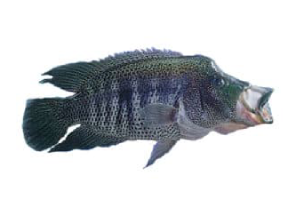
Rainbow Bass
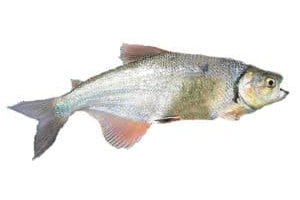
Machaca
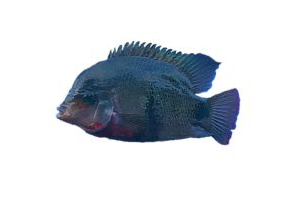
Mojarra
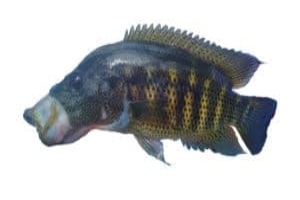
Jaguar Bass
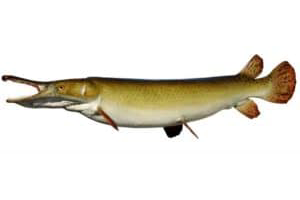
Tropical Gar
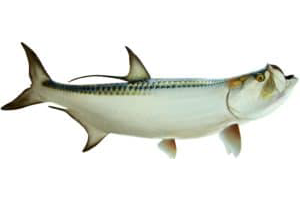
Tarpon
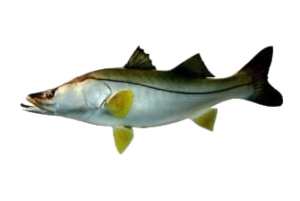
Snook
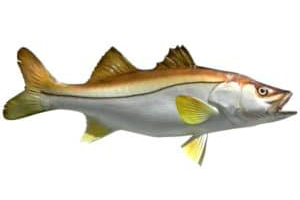
Snook
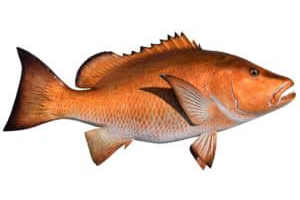
Mangrove Snapper
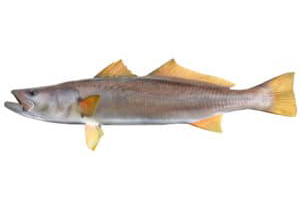
Corvina
Accommodations for Costa Rica Freshwater Fishing Packages
Tourism has been booming in Costa Rica since the 90’s so there is no shortage of quality fishing lodges and luxury hotels too choose. If you are fishing for rainbow bass on Lake Arenal you can stay at one of the many 4 and 5 star hotels in the area, some of which have their own thermal hot springs. On the Caribbean Coast, your options are eco-lodges or one of our many tarpon lodges while on the Pacific you can choose from the best beach hotels and resorts in the country. As a luxury vacation outfitter, we only work with the nicest 3, 4, and 5-star properties that meet our expectations for quality, reliability, and service so no matter where you are fishing we’ll have a nice place for you to stay. Being local experts, we have personally visited every single property we represent so we’ll use our personal experience to hand pick the perfect fit for your group on your Costa Rica fishing vacation.
Costa Rica Day Tours & Non-Fishing Activities
- Canopy zip-line tour
- White Water Rafting
- Waterfall rappelling
- ATVs
- Horseback Riding (beach or rainforest)
- Surfing
- Golf
- Guided tours of national parks
- Waterfalls
- Sunset catamaran cruise
- Snorkeling
- SCUBA Diving
- Kayaking
- Jet Skis
- Parasailing
- Coffee plantation tour
What Our Guests Love
About Costa Rica
Freshwater Fishing
Lorem ipsum dolor sit amet, consectetur adipiscing elit, sed do eiusmod tempor incididunt ut labore et dolore magna aliqua.
Lorem ipsum dolor sit amet, consectetur adipiscing elit, sed do eiusmod tempor incididunt ut labore et dolore magna aliqua.
Lorem ipsum dolor sit amet, consectetur adipiscing elit, sed do eiusmod tempor incididunt ut labore et dolore magna aliqua.
Lorem ipsum dolor sit amet, consectetur adipiscing elit, sed do eiusmod tempor incididunt ut labore et dolore magna aliqua.
What We Love
About Costa Rica
Freshwater Fishing
Lorem ipsum dolor sit amet, consectetur adipiscing elit, sed do eiusmod tempor incididunt ut labore et dolore magna aliqua.
Lorem ipsum dolor sit amet, consectetur adipiscing elit, sed do eiusmod tempor incididunt ut labore et dolore magna aliqua.
Lorem ipsum dolor sit amet, consectetur adipiscing elit, sed do eiusmod tempor incididunt ut labore et dolore magna aliqua.
Lorem ipsum dolor sit amet, consectetur adipiscing elit, sed do eiusmod tempor incididunt ut labore et dolore magna aliqua.
Costa Rica Fishing FAQs
Do I need a fishing license to fish in Costa Rica?
YES. All anglers need a fishing license to fish in Costa Rica. These are sold by the Instituto Costarricense de Pesca y Aquacultura, or INCOPESCA as they are known here. Unfortunately their website has functionality and language issues so it’s not easy to use, so you can buy the license in the morning right before you fish for the first time. The cost is $15 for one week or $30 for one month and it must be paid in cash.
How many people will be on my fishing boat?
All fishing charters booked by Central America Fishing are private, so the boat is 100% yours. We do not set up any shared charters.
What is the standard tip for a fishing charter in Costa Rica?
A standard tip for a charter fishing crew in Costa Rica is 10%-20% of the cost of the charter. Most captains are paid a low salary with the idea they’ll earn more tips the more they fish, but many mates rely 100% on tips for their income. Tipping in USD or Costa Rican colones is fine. We recommend giving the entire tip to the captain and let him divide it up with the mate.
Can I bring my own fishing gear?
OF COURSE! Even though our private charters provide all the fishing tackle and bait you’ll need, you are always welcome to bring your own lures, reels, and even rods if you want to catch fish using your own tackle. Fly anglers are always encouraged to bring their own fly gear.
Which fish in Costa Rica are catch and release and which ones can I keep to eat?
By law, all billfish in Costa Rica are strictly catch and release. While not a law, we also strongly encourage releasing all roosterfish, tarpon, and cubera snapper as they are such prized inshore species. Other species like tuna, dorado (mahi), wahoo, snappers, groupers, corvina, snook can be kept and enjoyed for a fresh seafood dinner.
Can I bring fish back home with me to my own country?
If you really want to enjoy your catch our best advice is to eat it while it’s fresh here in Costa Rica. We understand many of you love the idea of a Costa Rican seafood dinner in the comforts of your own home, so the good news is there is no law against it and people do it all the time. However – we do not have the final say in this so there are some things you need to keep in mind:
1 – Unlike some other popular fishing destinations, in Costa Rica there is no service that will package and ship fish home for you. If you want to bring fish home with you you’ll have to do it yourself in your own luggage. Our best advice is to bring down a soft sided, leak-proof cooler, have your fish frozen completely solid, wrap them in newspaper, and then check your cooler as part of your luggage since it will stay cooler in the cargo hold of the plane versus in the cabin as a carry-on. If you don’t have a cooler or forget to bring one, you can purchase affordable plastic coolers here in local grocery stores.
2 – While Costa Rica does not prohibit you from bringing fish fillets home with you, your international airline might. We strongly recommend you confirm this with your airline (in writing if possible) or you may have the fish confiscated from you at the airport check-in.
3 – Even if your airline lets you fly the fish home, your local customs may have an issue with you bringing in meat products from a foreign country. In our experience most customs agents don’t seem too interested in you bringing back frozen fish fillets from your fishing vacation to Costa Rica, but it can depend on the agent and depend on the day.
What if there is bad weather on our fishing day?
First of all, it is extremely rare to have a fishing day cancelled due to bad weather. Costa Rica is too far south for hurricanes, and on top of that we custom design every single one of our Costa Rica fishing packages to factor in not only where you’ll have the best fishing but also the best weather & sea conditions for the time of year you visit us.
It does happen every once in a while however, so if the captain, local marina, or government deem the conditions are unsafe the trip will be cancelled. The first course of action is to try and reschedule you, but if that is not possible you will be refunded in full.
Please note that rain and dark clouds are not considered bad weather. We are in the tropics and rain is a common occurrence here so that is not a cause for cancelling the trip. Many great fishing days happen in the rain – as they say the fish are wet anyway!
Why Fish With CAF?
We have been fishing, living, and traveling around Central America since 2003. Plan your trip with local experts to make sure you are in the right place, at the right time, and on the right boat. We’ll help you fish for what you want, the way you want.
Free vacation planning + the best direct rates. No booking fees!
Personalized service from pre-arrival to 24/7 in-country support.
Hand-picked accommodations, fishing captains, expert guides for the best vacation experience.
Nearly 40% of our anglers are repeat & referral guests. CAF puts you on the fish!
We are proud to have a global reach and have hosted anglers from 14 different countries here in Central America!
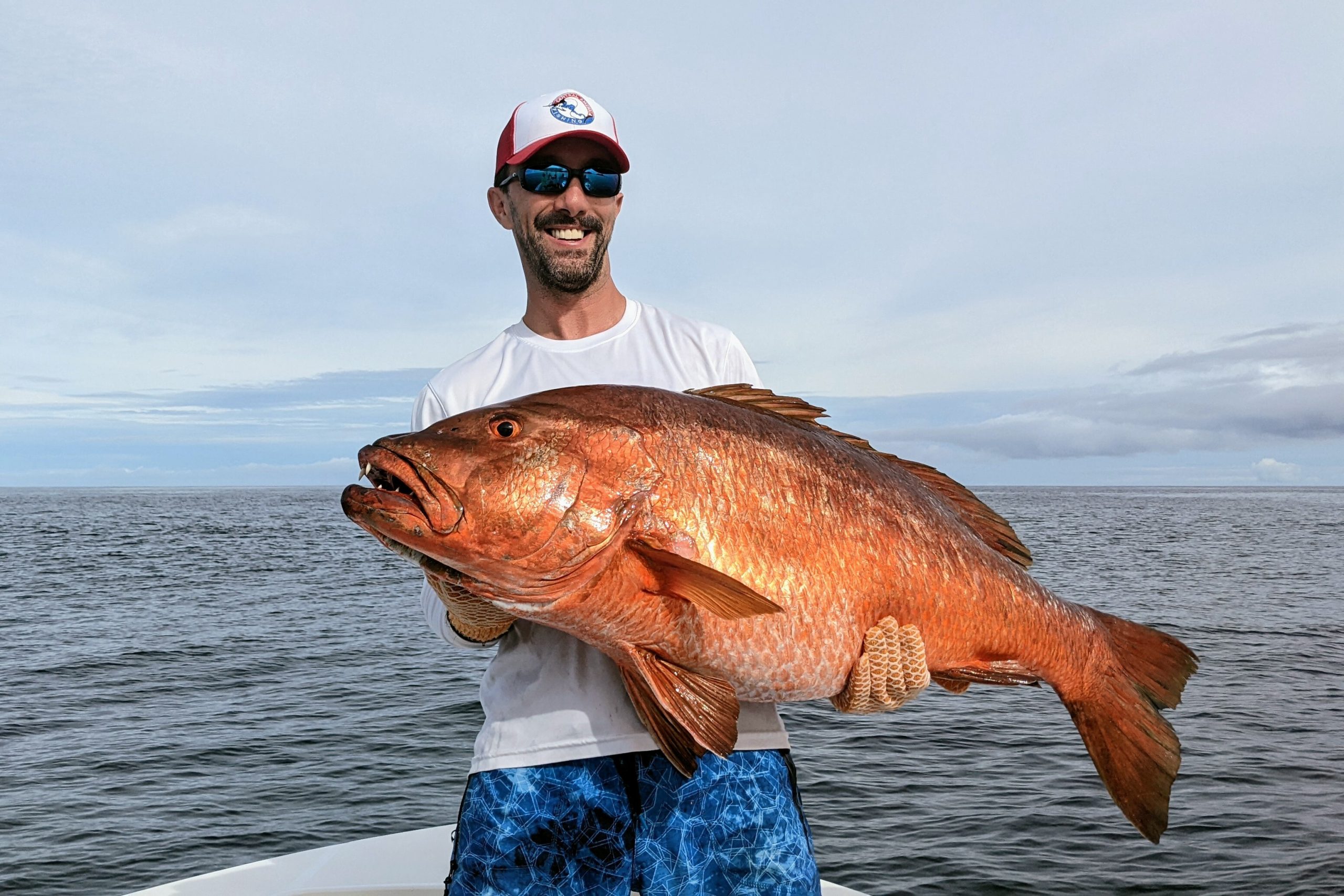
About the Author
I first visited Costa Rica during a semester abroad in 2003 and instantly fell in love with the language, culture, and natural beauty. I caught my first roosterfish on that trip, and ever since then I knew that I wanted to live here. After graduating in 2004, I worked for a year in the corporate world, but I was unhappy and unstimulated, so I returned to live in Costa Rica full time in 2005. Today I can proudly say that I’ve been in Costa Rica for half of my life, I met my wife here, and my two boys were born here so they are “Ticos”.
I’ve been working in the sport fishing industry in Central America for twenty years, I’ve had articles published in fishing magazines, hosted fishing TV shows, fished in several tournaments, and I’m a four-time IGFA trophy club member. I am however most proud to say that 40% of our anglers are repeat and referral guests. I’ve personally visited every destination, hotel, and fishing lodge that we partner with so that your next vacation with us is one of the best you’ve ever had.
Chris Atkins - Angler & Owner of Central America Fishing
All fishing vacations booked with Central America Fishing include the following:
- Free Vacation Planning (no fees + direct rates)
- VIP Airport Meet & Greet upon arrival into SJO
- Private, air-conditioned transfers with English speaking driver.
- Luxury, private accommodations hand-picked and customized for your group. Choose between private condos & villas, luxury beach resorts, exclusive boutique hotels, and fishing lodges.
- Private fishing charters
- All eco / adventure tours you’d like to include
- All Costa Rican taxes
- Free quotes on travel insurance
- Pre-arrival assistance with dinner reservations, tee times, pre-stocking your condo or villa, hiring a private chef, and special requests.
- 24/7 support once you are here in country
